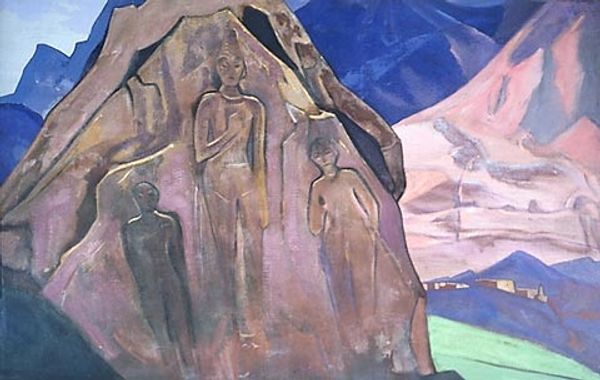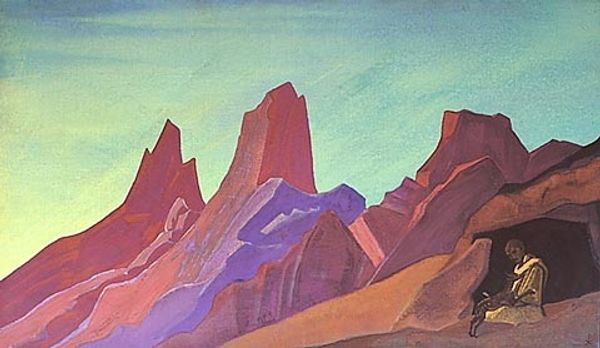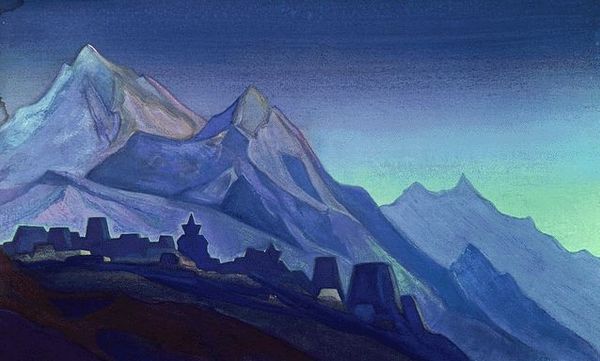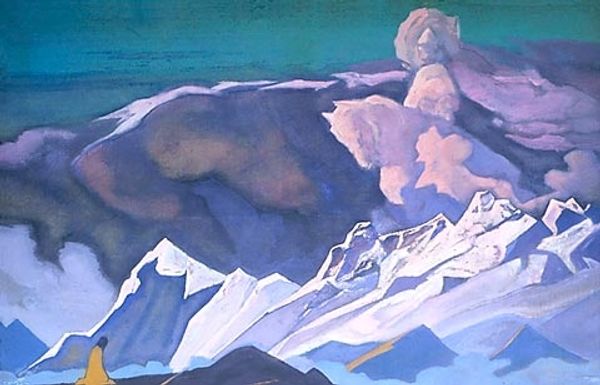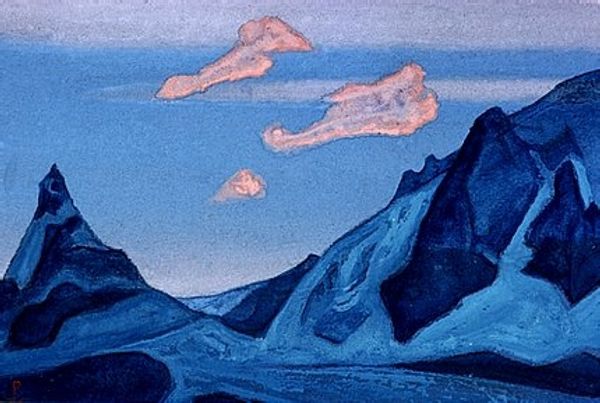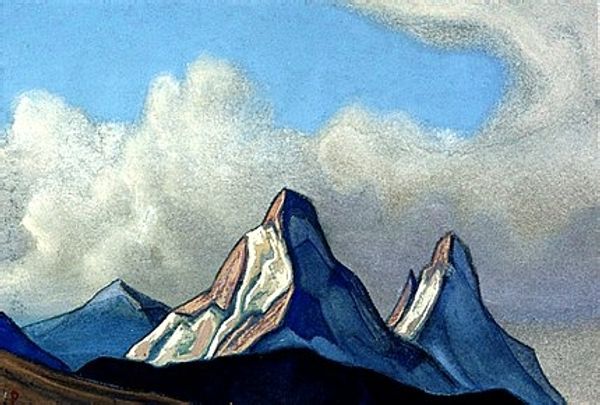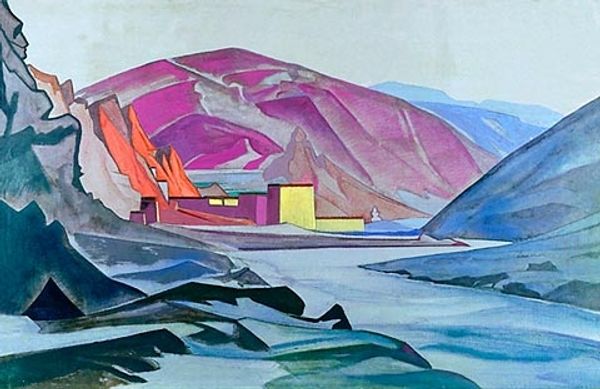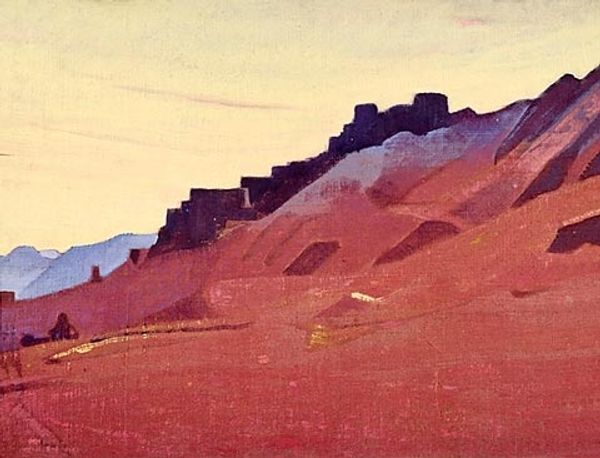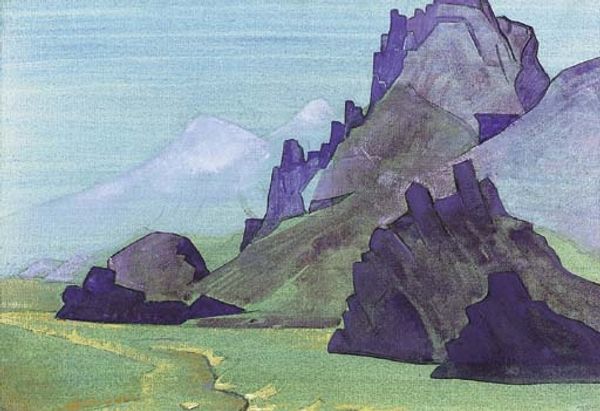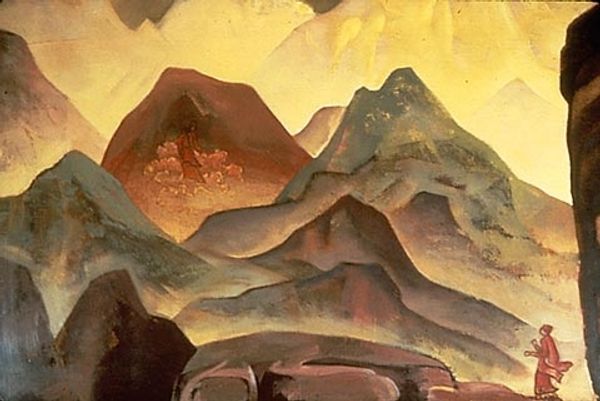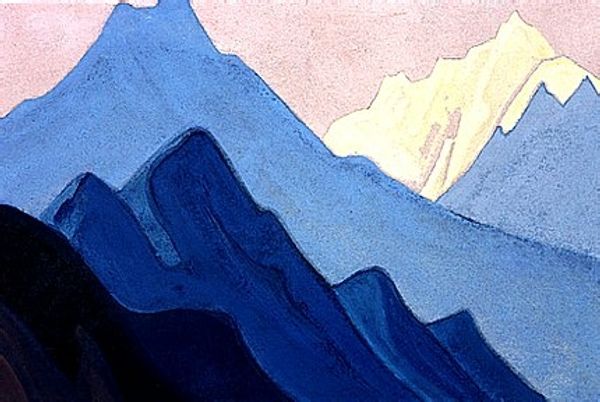
tempera, painting
#
narrative-art
#
tempera
#
painting
#
landscape
#
oil painting
#
mythology
#
symbolism
#
history-painting
Copyright: Public domain
Editor: This painting is called "Sword of King Gesar" by Nicholas Roerich. It’s done in tempera, and it looks like a symbolic landscape to me. The rock formation with the swords etched on it looks very solid, almost monumental. How would you interpret this artwork? Curator: Considering Roerich's interest in theosophy and Eastern cultures, I see this painting primarily as an engagement with labor and belief systems. What processes are required to inscribe symbols – of power and legend – onto rock? It makes one consider not just the legend of King Gesar itself, but the *means* through which it’s preserved and made material across generations. The sword as tool and symbol invites scrutiny of how tools shape cultural production, don’t you think? Editor: That’s an interesting perspective. So you're focusing less on the mythical aspect and more on how the story became tangible? Curator: Exactly. How material conditions, like access to tools and pigment, shape our understanding and perpetuation of narratives. How long would it take to cut symbols that size into solid rock with primitive tools? Or did more advanced metallurgy assist? Was there, indeed, any King Gesar, and how would he manufacture these particular weapons depicted on the stone? Considering Roerich was working in the early to mid 20th century, with major societal upheaval and two World Wars, one can see his interest in solidifying culture and a lost heroic past. Editor: I see what you mean. It definitely shifts the focus from just the narrative to the practical, material effort of creating and maintaining the legend. So it becomes more about labor history in addition to cultural history. Curator: Precisely. This changes our appreciation of what makes ‘art’. Where exactly is it: in Gesar's ‘Sword,’ or in the cutting? Editor: This perspective offers a way of interpreting art in a very tangible way. Thank you.
Comments
No comments
Be the first to comment and join the conversation on the ultimate creative platform.
